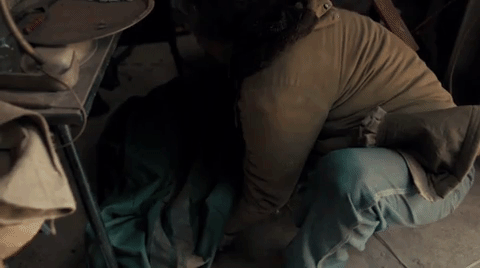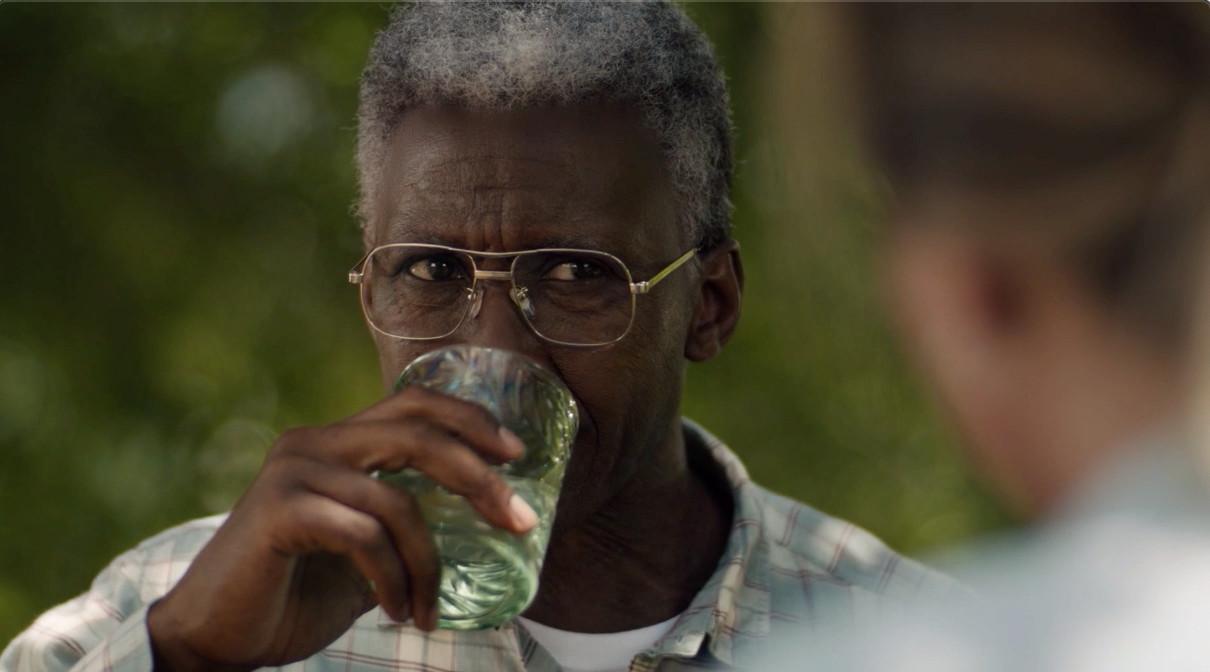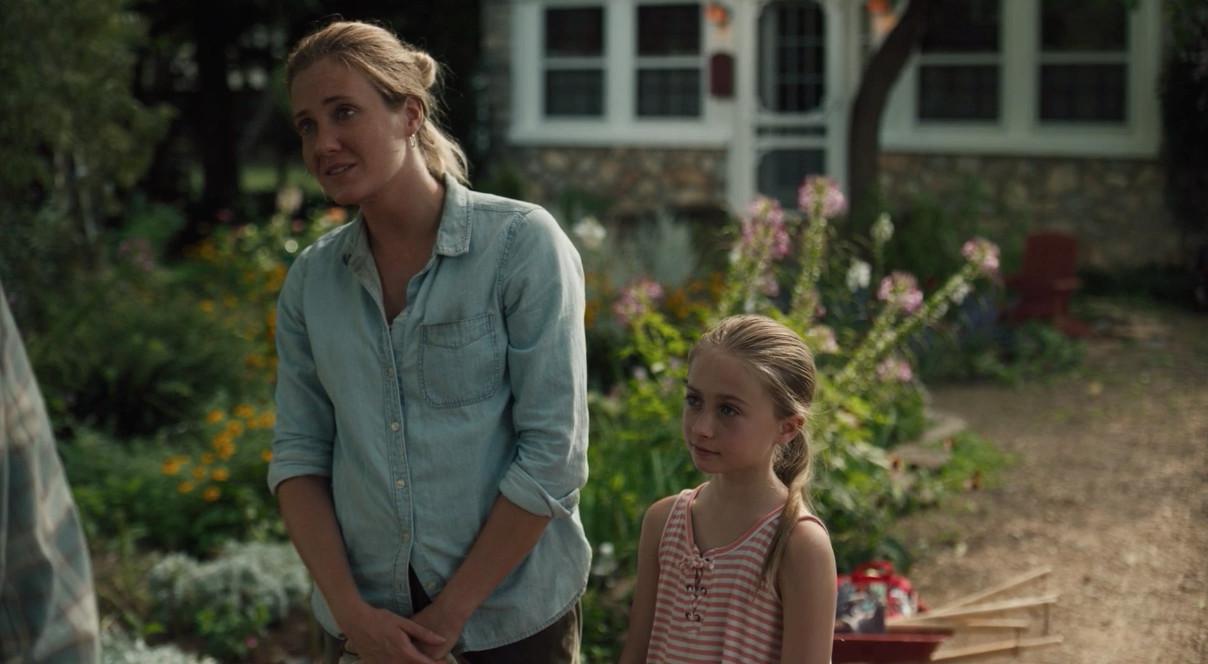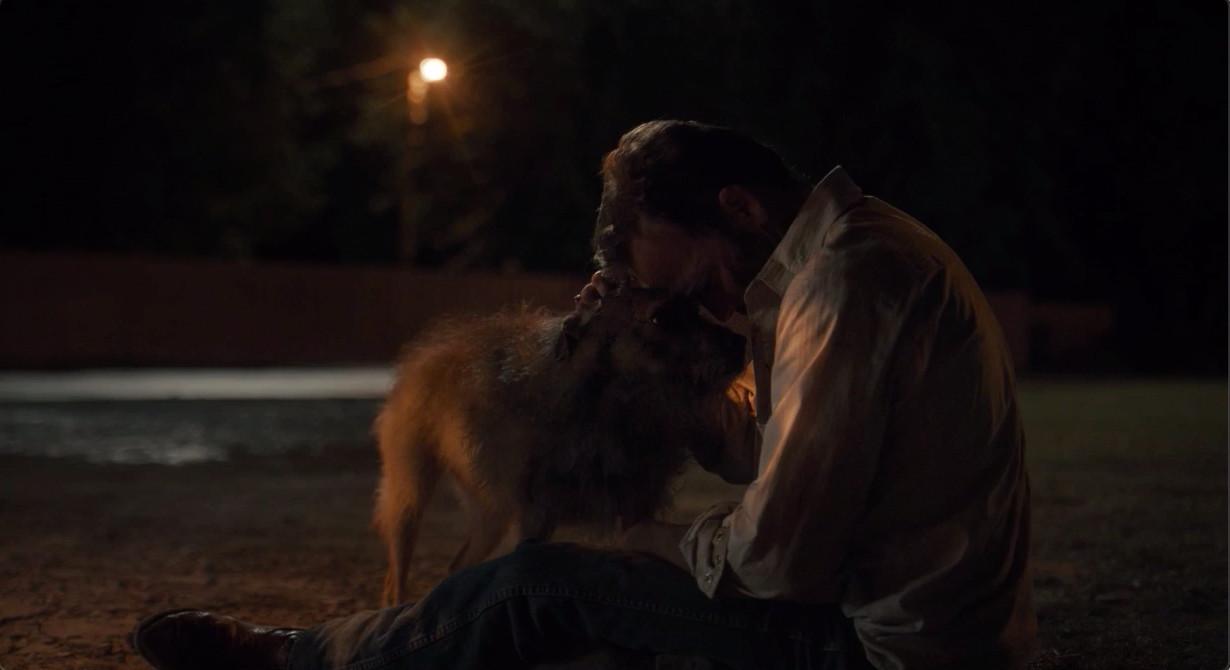
Meet the new season of True Detective, same as the first season of True Detective. OK, so Season 3 is not a complete retread of the critically acclaimed freshman season, which put this anthology series on the map, but all the hallmarks are here: We’ve got multiple timelines; a Southern setting; cops with a penchant for philosophizing, cigarettes, and liquor; brutal crimes against children; hints of the occult. You know, the good stuff. But, of course, a new season means a whole new case, and a whole new mystery to crack. While True Detective is more than the sum of its potential killer(s) (despite the timelines, this isn’t Westworld, where the only attraction is trying to guess what will happen), there’s an undeniable, compulsive thrill in looking at the clues and joining Mahershala Ali’s Detective Wayne Hays in the decades-spanning mystery about two missing children in a small Arkansas town. What really went down? Who could be responsible? What themes, dialogue, and visuals might provide clarity? Who’s wearing the best wig? That’s what we’re here to glean from week to week, wrapping things up with Sunday’s season finale, “Now Am Found.”
Who Done It?
Seven episodes of prognostications, red herrings, wide-ranging conspiracies, and the small (but alluring) chance of a Rust Cohle cameo have led to an audacious season finale—but not for the reasons you might think. (And not just because HBO and writer-creator Nic Pizzolatto dropped this finale the same night as the Oscars.) We finally know what happened when Julie Purcell was kidnapped and Will Purcell was killed in 1980, and while most viewers probably had a general idea of how things played out thanks to the clues spread across three timelines, the end result is, in true True Detective form, bittersweet.
No need to break down suspects; we’ve got everything we need. Let’s just lay out all the tragic details of the Purcell case. As Junius Watts (played by Steven Williams)—previously identified as Mr. June, the mysterious black man with one eye—tells Wayne Hays (Mahershala Ali) and Roland West (Stephen Dorff) in 2015, Watts started working for Edward Hoyt (Michael Rooker) when Hoyt Foods was just starting out as a chicken company. (Not that this pertains to the Purcell investigation, but he lost his left eye on the chicken-factory line.)
Once the company transformed into a Tyson Foods–esque empire, Watts began working at the Hoyt family estate, which is how he came to help raise Edward’s daughter, Isabel. However, as Isabel grew up, got married, and had a daughter, tragedy struck the family—and not for the first time, since Isabel had already lost her mother to illness. Isabel’s husband and daughter died in an accident, leaving her distraught and inconsolable. Then when Isabel saw the Purcell family at a Hoyt company picnic—Julie’s mother, Lucy (Mamie Gummer), used to work on the chicken-factory line, too—she became obsessed with Julie, who reminded her of her own daughter.
Through Watts, Isabel and Lucy made an arrangement, which her husband, Tom (played by Scoot McNairy and his god-stache, which tragically didn’t make an appearance in the finale), wasn’t privy to. Isabel was allowed to spend time with Julie—so long as Lucy was paid, and so long as Will was there to keep an eye on his little sister. The setup worked for a time; they would play in the woods, thereby confirming that Isabel and Watts were the ones spotted in the area by townsfolk several times. But during one fateful visit, in which Isabel was not quite herself—she kept calling Julie by her late daughter’s name, Mary—she tried to grab Julie and take her away. When Will resisted, Isabel pushed him, and he hit his head against a rock.

Watts didn’t want Julie to be upset, so he told her that Will was resting, which explains why his body was left in a strangely serene pose in a nearby cave: It was all to placate Julie’s concerns about her brother before she was whisked away from her family. To cover up the murder, then–highway patrolman Harris James (Scott Shepherd) told Lucy what had happened, paid her off with the Hoyts’ money, and planted evidence at Brett Woodard’s (Michael Greyeyes) home, including Julie’s burned sweater. So Julie, presumed dead, spent several years in the “pink rooms” of the Hoyt estate’s basement. While Watts tells the detectives that he initially thought Julie was happy, he was unaware that Isabel was giving her lithium. Because memory loss is a side effect of lithium, Julie forgot who she was—unhelped by the fact that Isabel repeatedly called her Mary.
Knowing what Isabel had done, and with Julie getting older and beginning to remember some of her past with her brother, Watts left the doors in the basement unlocked so she could escape. Instead of meeting Watts at a rendezvous point, she vanished for good. Isabel overdosed on pills and died; Watts looked anywhere and everywhere for Julie, including one of Amelia’s (Carmen Ejogo) book signings. In 1997, Watts learned that Julie had gone to work at a shelter for runaway girls like herself in Fort Smith, Arkansas, the same one Amelia visited briefly in the sixth episode. But according to one of the nuns, Julie—who was going by “Mary July”—died from HIV. Case closed, right?
Not quite. After Hays and Roland pay their respects at Mary July’s tombstone in 2015, a little girl named Lucy who bears a striking resemblance to Julie bumps into them. She’s there with her father, Mike Ardoin, who runs a lawn-servicing company. We’ve seen him before, from the window of that women’s shelter in the sixth episode:

It was at this point in the episode when I, very calmly, began screaming, “JULIE IS ALIVE! JULIE IS ALIVE!”
Hays puts the pieces together the next day, with an assist from Amelia’s book. Landscaper Mike was one of Julie’s classmates. (I’m sure it’s not a coincidence this dude has the same occupation as Season 1’s Errol Childress. Pizzolatto has a weird sense of humor!) He was the kid who told Hays and West that he saw Julie with “the two ghosts” on Halloween night in 1980 and, as Amelia writes in her novel, he had a giant crush on Julie. Through pure happenstance, and because his dad’s company did landscaping for the convent, adult Mike found Julie, and they fell in love. The nuns, with seemingly some idea of where she came from and the people who were after her, faked Julie’s death so that she could start anew with Mike and raise a family in peace. Not that Hays was trying to disrupt that in 2015—he was more interested in finding answers—but he finds Mike’s address and drives up to the house before his memory starts getting fuzzy. In one of the show’s most simultaneously infuriating and endearing moments, Julie friggin’ Purcell helps Hays give directions to his son, Henry (Ray Fisher), over the phone, so that Henry can come pick him up.
For a moment I thought True Detective was going to end there, with Hays blissfully unaware that he had just made small talk with the person he he’d been obsessing over for decades. Considering all the people who were killed in connection to the case, it seemed almost aggressively anticlimactic. But then, as Hays sips a glass of water little Lucy had brought him, I think it all came back together for him. (It’s certainly open to interpretation, but this seems to be a very telling shot.)

If so, Hays gets what he came for: Julie Purcell is still alive, and, by all accounts, doing well. There’s a sense of closure. But it’s undeniably distressing that Julie will likely never know what really happened to Will, or that her father, Tom, did deeply love and miss her. Because of how much Julie had been drugged, she knew Tom only as that “man on TV pretending to be my father.” That’s just awful to consider, even in the context of fiction.
Justice won’t be had in the traditional sense when it comes to the Purcell case; even Watts was hoping that Hays and Roland would either arrest him or kill him for his role in the kidnapping, but they don’t, lacking both the authority and any desire for bloody retribution. But we can certainly take some solace in knowing that Julie moved on from the traumatic experiences of her childhood and lives a healthy and fulfilling life raising a daughter of her own. Julie’s daughter already has a better setup than Chad Velcoro, so that’s something.
Theme of the Week: Fiction vs. Truth
As we just exhaustively covered, everything that Julie hazily remembers about her childhood from the “pink rooms” is built on a lie. If she didn’t remember Tom in 1990, chances are she doesn’t remember Lucy. To the best of her knowledge, Isabel was her real mother, and her name was Mary; Julie’s childhood, and identity, were effectively stolen from her.
But there comes a point when it’s arguably better to keep that fiction in place than uncover the truth. Think about it: If you were in Hays’s shoes when he finds Julie in 2015, would you really want to let her know that she’d been abducted, had a family that she can’t even remember—and, oh yeah, they’ve been brutally killed? If Hays really did come back to his senses at the last minute and realize that he was staring at Julie, perhaps he implicitly understood that preserving the fiction of her (already messed up, mind you) childhood was better than blowing up everything after she had achieved some normalcy.
It’s the same ethos that the members of the convent adhered to. It was better to stage a death—complete with a gravestone for Julie—in the event that someone came looking for her.
When the truth is as painful as Julie Purcell’s family history, it may be better to live in the fiction you know. The truth isn’t always what’s best for someone—not when it is the kind of gruesome, devastating story that true-crime documentarians are dying to pick apart. Though, it should be said, the season does end with a minor cliff-hanger: Instead of throwing out Hays’s scribbled note with Julie’s address, Henry keeps it in his pocket, implying that he might pursue this lead. For Julie’s sake, hopefully he never does.
Iconic True Detective Looks, Ranked
Underneath the true-crime mysteries at the forefront of each season, True Detective is a show that is admirably devoted to capturing the aesthetics that define its many eras. With that comes some pretty incredible costume and makeup work, which we’ll be highlighting throughout the season.
4. Mahershala Ali’s Oscar Beanie

It was hard to avoid Mahershala Ali on Sunday night. If you weren’t tuning in to True Detective, you likely saw the man win his second Oscar with a damn beanie on his head. “Thank you to the Academy. I am so honored to be up here accepting this award, but everyone should flip the channel to HBO,” he definitely said in his speech, which you shouldn’t fact-check. “The True Detective finale is on right now, and I’m out there playing as many versions of myself as Kyle MacLachlan in Twin Peaks. It’s lit.” He then jaunted across the stage with Glenn Close’s dog before Roma won Best Picture. (Don’t fact-check this, either.)
3. Julie Purcell!!

The lady of the hour. I can’t pretend I know much about her life, but if her garden is anything to go off of, my girl is flourishing.
2. Vietnam Mahershala

If three timelines weren’t enough, may I interest you in an abstract closing shot of Wayne Hays venturing through the jungles of Vietnam, tracking an unseen enemy he may never fully understand or defeat? I love metaphors!
1. Dorff and This Dog

Of all the loose ends for the season finale to tie up, I did not expect “the origin story of Roland’s love of stray dogs” to make the cut. But consider this the episode’s most pleasant moment. Roland found a good boy in a hopeless place, after intentionally getting himself beat up by bikers, looking to punish himself for killing Harris James. And that dog is full of love and just—whoops, I’m crying again.
Most Important Player of the Week
Every week, it seemed like Pizzolatto was walking on a tightrope. Fans wanted a return to form and as much distance from Season 2 as possible. But for True Detective to elevate its third season beyond callbacks and familiar territory, it needed to be something different.
Unexpectedly, Pizzolatto’s return to form meant some back-to-basics storytelling. This season was more interested in being a rich character study than a labyrinthine mystery. I’ll be the first to admit I didn’t see it coming—these winding recaps serve as evidence of that—but instead of an elaborate and far-reaching pedophilia ring, or something connected to the Yellow King, the third season was a straightforward, gripping story about loss, regret, and memory. Julie Purcell wasn’t one girl among many who was abducted or sold off; she was one heartbreaking case that spanned decades. This is a stark departure from the first two seasons of True Detective, and the fact that Pizzolatto, who’s been parodied on BoJack Horseman, can go for something so comparatively understated bodes well for his future.
This is not to say that Pizzolatto didn’t have his missteps this season—did Lucy Purcell really need to say she had the “soul of a whore” twice in the span of a conversation?—but he’s certainly earned back some of the good will he lost in 2015.
What awaits? I think that on the strength of this third season, Pizzolatto has earned his chance at a fourth, if the right idea comes to mind and HBO is willing. With any luck, we can see Ali or Dorff, or both, pick up an Emmy nomination this year. Until then? Well, it’s been a hell of a ride. I’m sorry some of my theories might’ve led you astray; I’m not sorry so many of you dove into an Amelia-is-the-killer rabbit hole—that was ridiculous.
Disclosure: HBO is an initial investor in The Ringer.
